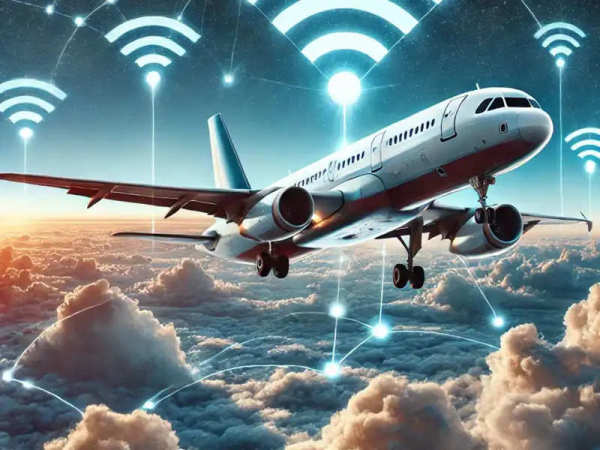
Nowadays it has become possible to use Wi-Fi even during flight so that passengers can enjoy the Internet while traveling. Wi-Fi in flight is a cutting-edge technology that works through special devices and satellites. Let's know how Wi-Fi works in flight and where the signal comes from.
How does Wi-Fi work in flight?
Wi-Fi in flight works through two main technologies, the first of which is Air-to-Ground (ATG), and the second is a satellite-based network.
Air-to-Ground (ATG) Network: In this technology, radio signals are used between the aircraft and the ground. A receiver is installed in the aircraft, which receives internet signals from towers installed on the ground. When the aircraft is in the air, these signals are constantly in contact with the nearest tower, although this technology is less effective at high altitudes and above the sea.
Satellite-based network: In this technology, the aircraft receives signals directly from the satellite. The aircraft has an antenna, which connects to the satellite and receives internet signals. This technology is more accurate and widespread, as satellites cover the entire globe.
Satellite connections are usually of two types.
Geostationary Satellites (GEO): These remain stationary and provide signals to the aircraft.
Low-Earth Orbit Satellites (LEO): These rotate faster and provide better signals.
Where does the signal come from?
Under air-to-ground technology, the aircraft receives signals from telecom towers on the ground. This system works only above the ground, so it is not effective over the sea. In satellite-based networks, the signal is received from the satellite, which also works over the sea and remote areas. Satellite internet providers, such as Inmarsat, Viasat, and Starlink, provide the signal.
How is Wi-Fi distributed in the plane?
Special routers are installed inside the aircraft to distribute Wi-Fi signals. These routers spread the internet signal throughout the cabin, allowing passengers to connect their devices. Every passenger is provided with a password or login system to access the internet.
Disclaimer: This content has been sourced and edited from Amar Ujala. While we have made modifications for clarity and presentation, the original content belongs to its respective authors and website. We do not claim ownership of the content.